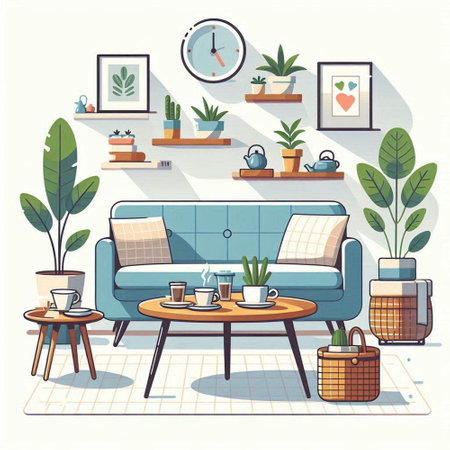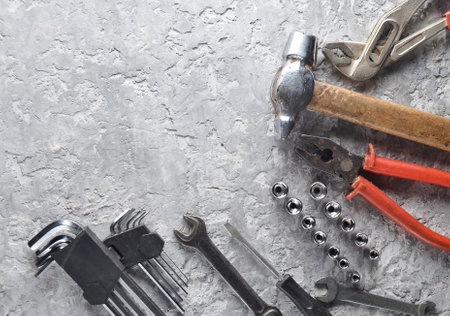Understanding Upcycling: What It Means for British Homes
Upcycling has quickly become a buzzword in the UK, especially among homeowners eager to blend creativity with sustainability. Unlike traditional recycling, which often breaks materials down to their basic form, upcycling is all about transforming old or unwanted furniture into something new and useful—without losing its original value. This process not only breathes new life into items destined for landfill but also encourages a more mindful approach to home improvement. In British households, where character and history are highly valued, upcycling allows individuals to preserve the charm of vintage pieces while adapting them to modern tastes. Moreover, as environmental concerns continue to rise across the UK, upcycling offers a practical solution for reducing waste and carbon footprints. By choosing to upcycle, you’re not just saving money—you’re making a positive impact on the planet and giving your home a unique story. This growing trend reflects a wider shift towards conscious living, making upcycling an essential skill for anyone looking to enhance their living space in a sustainable way.
2. Sourcing Furniture in the UK: Where to Find Gems
Finding the right piece to upcycle is half the fun and challenge for every beginner. The UK offers a treasure trove of opportunities if you know where to look. From bustling car boot sales to high-street charity shops, and even digital hunting grounds like Facebook Marketplace, there’s no shortage of pre-loved furniture waiting for a new lease of life.
Car Boot Sales: Early Birds Catch the Best Bargains
Car boot sales are a British weekend staple, perfect for those who love the thrill of a bargain hunt. Arrive early to snap up unique finds before they’re gone. Don’t be afraid to haggle—most sellers expect it, and you could walk away with a vintage gem at a fraction of its value.
Charity Shops: Supporting Good Causes While You Shop
Charity shops such as Oxfam, British Heart Foundation, and Sue Ryder often have sturdy wooden furniture at very reasonable prices. Shopping here not only supports worthwhile causes but also gives you access to quality pieces that might just need a bit of TLC.
Online Marketplaces: Convenience Meets Local Deals
Sites like Facebook Marketplace and Gumtree have revolutionised how we source second-hand furniture in the UK. Set your location filters and keep notifications on for keywords such as “solid wood,” “vintage,” or “free to collect.” Always arrange safe collection points and inspect items closely before handing over cash.
Comparison Table: Popular UK Furniture Sourcing Spots
| Source | Pros | Cons |
|---|---|---|
| Car Boot Sales | Bargain prices, unique finds, chance to negotiate | Early start needed, hit-and-miss selection |
| Charity Shops | Supports charities, decent quality stock, local access | Limited choice, rapid turnover |
| Facebook Marketplace/Gumtree | Wide range, filter by location/price, contactless browsing | No guarantees, must arrange own transport |
| Auction Houses | Potenially high-quality antiques, exciting atmosphere | Prices can escalate quickly, buyer’s fees apply |
| Council Recycling Centres (Tip Shops) | Low-cost or free items, eco-friendly sourcing | Lesser-known option, quality varies greatly |
Top Tips for Successful Sourcing in the UK:
- Check measurements before buying—UK homes can have tricky staircases and narrow doorways.
- If using online platforms, act fast; good deals rarely last long.
- Look past cosmetic damage—surface scratches or dated paint can often be fixed easily during upcycling.
- Don’t forget about safety: always meet in well-lit public places if collecting from individuals.
- If possible, bring tools or a van when collecting bulky items—many sellers don’t offer delivery.
Sourcing furniture for upcycling is an adventure in itself. With these tips tailored for the UK scene, you’ll soon become adept at spotting potential in overlooked pieces and giving them a brand-new story in your home.

3. Essential Tools and Materials for Upcycling Success
Getting started with upcycling furniture in the UK is much easier when you have the right tools and materials on hand. As a beginner, building your toolkit doesn’t need to be expensive or overwhelming – focus on practical essentials that are widely available from local DIY stores like B&Q, Wickes, or even your nearest charity shop.
Core Tools Every Beginner Should Have
For most upcycling projects, a few core tools will take you far. A quality sanding block or an electric sander is crucial for prepping surfaces, especially if you’re working with older pieces coated in varnish or paint. Screwdrivers (both flathead and Phillips) and a claw hammer will help with disassembling and reassembling furniture. Don’t forget a good tape measure for accurate sizing, and a set of paintbrushes or foam rollers for applying finishes.
Paints, Finishes, and Other Materials
Choosing the right paints and finishes can make all the difference. In the UK, water-based chalk paints are particularly popular thanks to their easy application and quick drying times; brands such as Annie Sloan and Rust-Oleum are household names. You’ll also want to pick up wax or clear varnish to seal your work for durability. For those aiming for a more eco-friendly approach, look out for low-VOC or recycled-content paints – now widely stocked by British retailers.
Safety Equipment & Practical Extras
Safety first: always use dust masks and protective gloves when sanding or painting. Old sheets or dust covers will protect your workspace from drips and splashes. Keep some sugar soap handy for cleaning surfaces before you begin, ensuring a smooth finish. Finally, have a sturdy set of clamps to hold things steady as you work – a true game-changer for precision tasks.
By starting with these essential tools and materials, you’ll set yourself up for success on any UK upcycling project. As you gain confidence, you can expand your toolkit based on your favourite techniques and styles.
4. Preparing and Repairing: Getting Your Piece Ready
Before you dive into the creative process of upcycling, it’s essential to ensure your furniture is structurally sound and ready for transformation. A thorough preparation not only provides a smooth canvas for painting or finishing but also guarantees longevity and durability—vital factors for furniture that will stand the test of time in your British home.
Step 1: Inspection – Assessing Your Find
Start by giving your chosen piece a careful inspection. Look out for signs of woodworm, loose joints, wobbly legs, water damage, or missing hardware. Pay particular attention to corners, hidden undersides, and drawer runners. Here’s a quick checklist to guide you:
| Area to Inspect | What to Look For |
|---|---|
| Joints & Legs | Wobbling, cracks, looseness |
| Surfaces | Bubbling, peeling veneer, scratches |
| Drawers & Doors | Sticking, misalignment, broken runners |
| Hardware | Missing knobs, rusty hinges |
| Underside/Back | Mould, rot, signs of pests |
Step 2: Cleaning – Creating a Fresh Start
No matter how clean something looks at first glance, deep cleaning is vital. Use a mild detergent diluted with warm water and a soft sponge or microfibre cloth to remove grime, dust, old polish and cobwebs. For stubborn stains or sticky residue (often found on old tables and sideboards), a solution of vinegar and water can be effective—just be sure to dry thoroughly to avoid swelling the wood.
Essential Cleaning Tools:
- Soft brushes for crevices and carvings
- Non-abrasive sponges or microfibre cloths
- Mild washing-up liquid (Fairy Liquid is a UK favourite)
- Bowl of warm water and white vinegar (optional)
- Towel for drying off after cleaning
Step 3: Basic Repairs – Building a Solid Foundation
Once cleaned and inspected, address any minor repairs before moving forward. Here are some common fixes:
| Issue | Repair Method |
|---|---|
| Loose Joints or Legs | Dab wood glue into joints; clamp until set (typically overnight) |
| Small Holes or Dents | Fill with wood filler; sand flush once dry |
| Squeaky Hinges/Drawer Runners | Add a drop of WD-40 or rub candle wax along runners |
| Peeled Veneer or Edges | Glue down carefully using PVA adhesive; hold with masking tape while drying |
| Missing Hardware | Sourcing replacements from local DIY shops or online marketplaces like Gumtree or eBay UK is often straightforward |
A Note on Structural Damage:
If you discover significant rot or infestation (e.g., active woodworm), seek professional advice before proceeding—especially important for antiques common in UK homes.
Your Robust Foundation Is Set!
A little time spent on these practical steps will pay dividends in the end result. Once your piece is clean, repaired and solid as a rock, you’re ready for sanding, priming and finally—bringing your creative vision to life.
5. Techniques and Finishes: Adding British Character
Popular Upcycling Methods in the UK
When it comes to upcycling furniture in the UK, classic methods such as sanding, priming, and painting remain staples. Stripping back old varnishes to reveal the original wood grain is a popular approach for those wanting a more rustic look, while decoupage and stencilling allow you to add unique, personal touches. Distressing techniques—such as using fine-grade sandpaper on edges—are widely used to give pieces a charming “lived-in” feel reminiscent of traditional British cottages.
Paint Types and Finishes Favoured Locally
British upcyclers often favour chalk paint for its velvety matte finish and ease of use, especially on older or ornate furniture. Milk paint is another eco-friendly choice that offers a subtly aged appearance well-suited to period homes. For a more contemporary British style, satin or eggshell paints provide a sleek, durable finish that stands up to modern living. Don’t forget to use a good-quality primer when working with glossy surfaces or dark woods to ensure your chosen paint adheres properly.
Waxing and Lacquering: Protecting Your Work
Finishing touches are crucial for both protecting your newly upcycled piece and enhancing its visual appeal. Clear waxes are commonly used in the UK to seal chalk-painted surfaces, providing a soft sheen while allowing the underlying colour to shine through. For high-traffic items like dining tables or chairs, consider applying a few coats of water-based lacquer for greater durability without yellowing over time.
Achieving Classic British Styles
If you’re aiming for timeless British elegance, opt for muted shades such as sage green, duck egg blue, or warm neutrals. These tones reflect the calming palettes often found in country homes and Georgian interiors. Adding subtle gold leaf accents or classic brass handles can further elevate the look.
Contemporary British Flair
For a modern twist, experiment with bold colours—think navy blue, mustard yellow, or forest green—and pair them with minimalist hardware. Geometric stencils or two-tone finishes can give tired furniture a fashionable update while maintaining that unmistakable British character.
Tip:
Always test your chosen paint and finish on an inconspicuous area first. This ensures compatibility with your material and helps avoid surprises once you’ve committed to the full transformation.
6. Sustainable Practices and Responsible Disposal
Upcycling furniture is not just about creativity—it’s also about making choices that are kind to the environment. As you embark on your upcycling journey in the UK, it’s essential to consider how your materials, processes, and waste management impact the planet.
Choosing Eco-Friendly Materials
Opt for paints, stains, and finishes that are low in VOCs (volatile organic compounds) and labelled as environmentally friendly. Many UK brands offer water-based or plant-based options that are both durable and gentle on the environment. When sourcing timber or replacement parts, look for FSC-certified wood or reclaimed materials from local salvage yards and charity shops. This not only reduces demand for new resources but also supports sustainable forestry practices.
Minimising Waste
Before you discard any offcuts, old hardware, or leftover paint, consider if they can be reused in another project or donated to community workshops. Plan your projects carefully to maximise the use of each material and avoid unnecessary waste. Repurpose old screws, handles, or brackets where possible—sometimes a simple polish or a coat of spray paint can give them a new lease of life.
Responsible Disposal in the UK
If there’s waste you can’t reuse, make sure you dispose of it responsibly. The UK boasts an extensive network of recycling centres where you can take metals, plastics, glass, and even certain types of paint. Check your local council’s website for specific guidance on sorting and disposing of different materials. For larger items like unwanted furniture frames or appliances, many councils offer collection services aimed at recycling rather than landfill disposal.
Supporting Local Recycling Initiatives
Get involved with local repair cafés, swap events, or online platforms such as Freegle and Gumtree to pass on usable materials or unfinished projects. Not only does this help reduce landfill waste, but it also strengthens community ties and encourages others to embrace upcycling. By prioritising eco-friendly methods and responsible disposal, you ensure your upcycling practice is truly sustainable—and contribute positively to both your home and the wider UK environment.


